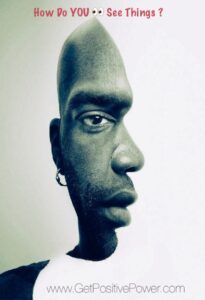 People see things differently because of a combination of life experiences, values, beliefs, emotions, environment, and biology. Here’s a breakdown of the main reasons why perceptions differ:
People see things differently because of a combination of life experiences, values, beliefs, emotions, environment, and biology. Here’s a breakdown of the main reasons why perceptions differ:
⸻
1. Personal Experiences
• Every person’s background—family, culture, trauma, education—shapes how they interpret the world.
• Example: Someone who grew up in poverty might see money as security, while someone born into wealth might see it as freedom.
⸻
2. Beliefs and Values
• Core values (like honesty, loyalty, success) influence how we judge right from wrong, important from unimportant.
• Religious, spiritual, or philosophical beliefs can deeply color how one views events or other people.
⸻
3. Emotions and Mental State
• A happy person may see opportunity; a depressed person may see only obstacles—even in the same situation.
• Our moods act like filters for how we interpret what’s around us.
⸻
4. Cultural Differences
• Culture shapes everything from language and humor to how we handle conflict or express love.
• What’s respectful in one culture may be rude in another.
⸻
5. Cognitive Biases
• Humans aren’t perfectly rational—we tend to favor information that confirms what we already believe (confirmation bias).
• We also judge situations differently depending on how they’re framed or how they make us feel.
⸻
6. Perspective and Role
• A boss, employee, customer, or outsider will all see a business decision differently based on how it affects them.
• “Where you sit determines what you see.”
⸻
7. Neurodiversity
• People with ADHD, autism, anxiety, etc., often literally process the world differently, seeing patterns, risks, or details others don’t.
~ Joe Gradia
 Completing a bucket list isn’t about racing through a checklist—it’s about intentionally living your life, one meaningful experience at a time. Here’s how to actually make it happen:
Completing a bucket list isn’t about racing through a checklist—it’s about intentionally living your life, one meaningful experience at a time. Here’s how to actually make it happen: Dream big. If your dreams don’t scare you, they’re not big enough. Go all in—or go home.” ~ Joe Gradia
Dream big. If your dreams don’t scare you, they’re not big enough. Go all in—or go home.” ~ Joe Gradia  Focusing inside and out means mastering your inner world (mind, emotions, energy) and your outer world (actions, relationships, environment). It’s about being aligned—what you think, feel, and do all point in the same direction.
Focusing inside and out means mastering your inner world (mind, emotions, energy) and your outer world (actions, relationships, environment). It’s about being aligned—what you think, feel, and do all point in the same direction. Choosing Your Next Move Wisely means slowing down just enough to be intentional about your direction—whether in your career, relationships, personal goals, or daily choices. Here’s a simple framework to help guide you:
Choosing Your Next Move Wisely means slowing down just enough to be intentional about your direction—whether in your career, relationships, personal goals, or daily choices. Here’s a simple framework to help guide you: